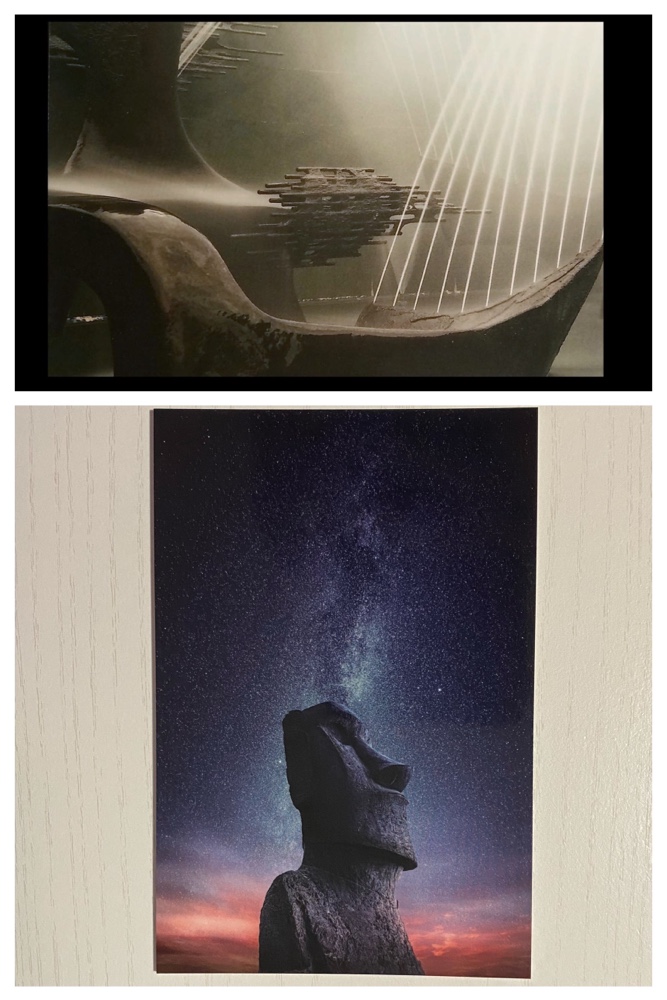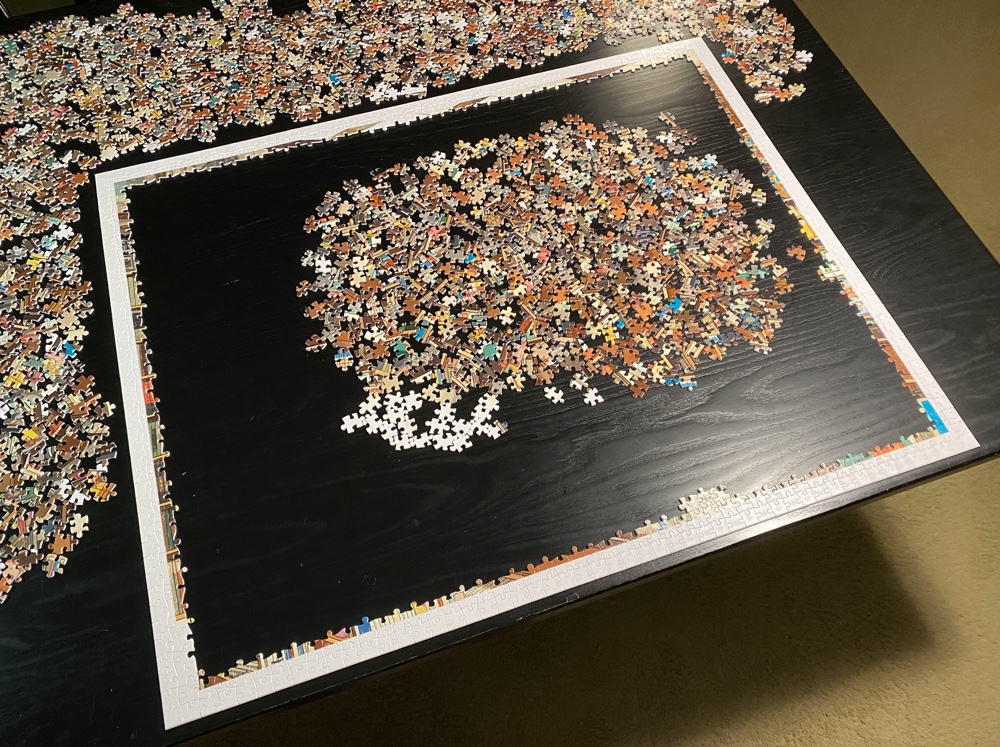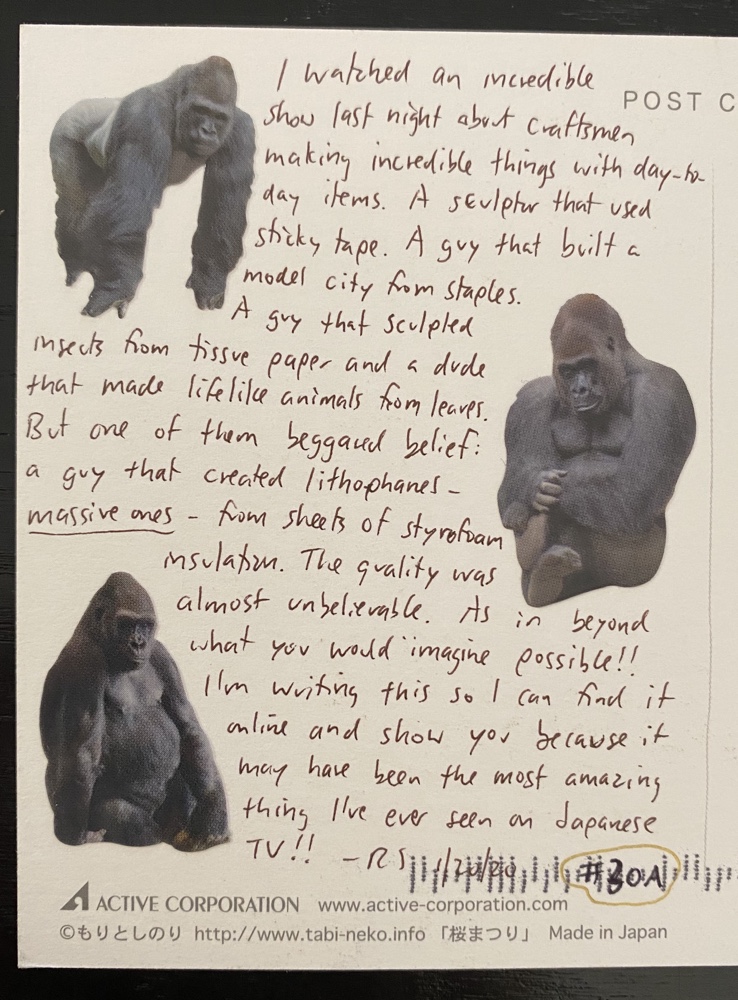The postcard contest is over! All cards have been mail, received and judged. It’s time for the final score.
To revise, at halftime the score was even-stevens, and the contest had been a nail-biter with close calls from the inscrutable judges.
I had mentioned at that point the existence of a mysterious fourth rule which hadn’t come into play and now it’s time to reveal what that was:
4) Each competitor has 2 points in total they can wager on cards. If they win that card, the points are added to their total score.
As of halftime neither of us had wagered any of our points which is why I didn’t mention it. But the points entered the contest in the last four cards: read on to see what effect they had!

Category 5: Horror
I chose this category, and when it came time to select an imagine regretted it since it proved to be a difficult one. I actually ended up making two cards and chose mine – on the left – at the last moment.
I chose well it seems, since the judges awarded me the win 3-2. The choice seemed difficult since some found the skeleton child unpleasant… but wasn’t that the point?
You’ll also note that here Bernard plays for the judges with his card by putting himself in the photo! As if the judges would fall for such an obvious gimmick…

Category 6: Lizard
This category was Bernard’s choice, possibly because he had his picture (the top one) in mind. I was so confident of my lovely chameleon I wagered one of my points on it.
Bernard won 3-2! My point was lost like tears in rain, and once again the overall score was tied! The judges that selected a Bernard’s card gave no comments on their choice, so I don’t know why his was chosen.
At this point KLS made an observation: Did the judges understand they were voting for postcards and not just photos? It was immaterial since judges decision was final, but I made that (slightly) clearer to them in the final two categories.

Category 7: Rain
This was Lakshmi’s category! Bernard’s card used a photo he took himself from inside a train in New Zealand, and mine was one of several I printed showing the Tokyo neon jungle on a rainy night.
Bernard won 5-0!!! This was the only blowout in the contest, and since not one judge gave any real comment I can’t say for sure why his was chosen unanimously.
I’ll attribute it to none of them having visited Tokyo on a rainy night 🙂
So the overall contest score is 4-3 Bernard’s way with one card left. If you’re keeping track you’ll know I have one point left to wager, and he has two. If I win the last category I’ll be the overall winner with 5-4; if he wins it it’ll be his rout at 7-3. It all came down to the very last card…

Category 8: Sculpture
The final category was chosen by Kristin, and it was a good one. Bernard’s card was the top (showing civic fountain in Newcastle) and mine the bottom showing a (real) photo of a moai against the stars.
Had I been a judge I would have said this was the most difficult pair to judge since they’re both good, and based on the comments this was indeed the case since a few judges took longest on this final card.
And in the end… my card won 3-2. As one judge said: Gotta be the moai.
So with my final point wagered the overall contest score was 5-4 with me as the winner. I’ll accept this triumphant victory with the humility I am known for!
Thanks to the judges. Thanks to Bernard for strong competition and thanks to Lakshmi and Kristin for the guest categories. This was a lot of fun to do and I already have some ideas for the next time we do it (such as have each judge pick a category) which I’m certain will happen before too long 🙂












